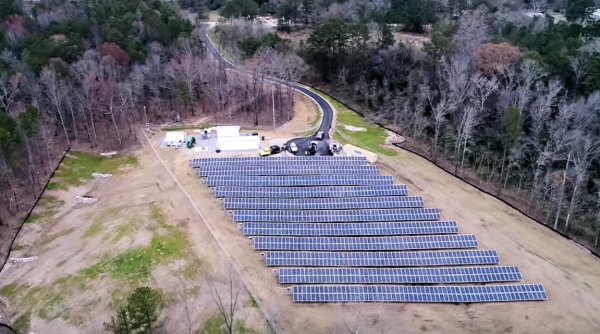"Altus at The Quarter," a townhome community consisting of 46 units, recently opened in Atlanta, Georgia and will serve as real-world research for understanding "how emerging smart technologies and distributed energy resources can impact energy efficiency, energy management and resiliency."
The townhomes include PV panels, battery storage, heat pump water heaters, and other energy efficient building elements - all managed by a "grid-interactive control system" developed by Oak Ridge National Laboratory ("ORNL") and the Department of Energy's Building Technologies Office ("BTO").
Oak Ridge National Laboratory was originally established in 1943 as part of the Manhattan Project. They are currently managed and operated by UT-Battelle as a federally funded research and development center sponsored by the DOE. ORNL supports DOE's national missions of scientific discovery, clean energy, and security.
The DOE's Building Technologies Office leads a vast network of research and industry partners to continually develop innovative, cost-effective energy saving solutions to create better products, better new homes, better ways to improve older homes, and better buildings in which we work, shop, and lead our everyday lives.
The grid-interactive control system, if successful, should have the ability to optimize home energy use and "manage the neighborhood's major energy users to maximize value for homeowners and grid operators alike."
Altus at The Quarter, also known as Georgia Power Smart Neighborhood, is the second community in the BTO's Connected Neighborhood project. The first community, Reynolds Landing, has been operational since 2017 and consists of 62 single family homes in Hoover, Alabama.
 Microgrid at Reynolds Landing (photo: smartneighbor.com)
Microgrid at Reynolds Landing (photo: smartneighbor.com)
As of August 2019, researchers have discovered that the Reynolds Landing homes use 39% less energy than a sample set of new homes in the Birmingham metro area.
"Grid-interactive efficient buildings like these in our Atlanta and Hoover neighborhoods go beyond energy efficiency in that they're advanced and able to not only harness the flexibility of their equipment and loads, but to deploy that flexibility in ways that also benefit the grid," says BTO Director David Nemtzow. "Grid-interactive buildings can improve the affordability and sustainability of energy by helping utilities reduce peak demand periods that are particularly costly and stressful for utilities to manage and for consumers to pay on their energy bills. This efficiency, in turn, helps reduce energy waste."
The DOE recently released a Funding Opportunity Announcement (FOA) for "Connected Communities". The FOA would support the DOE's Office of Energy Efficiency and Renewable Energy (EERE) Grid-interactive Efficient Buildings research initiative, which explores how smart building technologies and practices will enable American businesses and families to save energy and reduce their utility bills while protecting their comfort, productivity, and quality of life.
Those interested in learning more or participating in this FOA can learn more here or reach out to aaron@eeba.org to talk about collaborating.